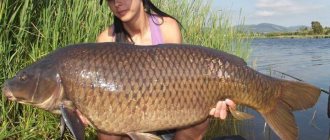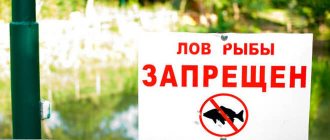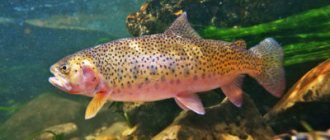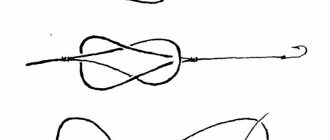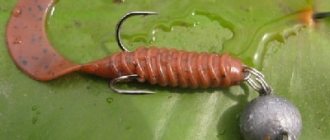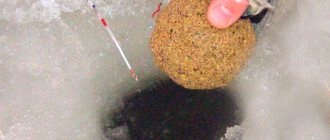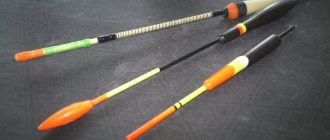Red fish has been a delicacy and the best decoration for any holiday table for several centuries. Dishes made from these fish have high nutritional value and excellent taste. Let's take a closer look at the list and find out which fish can be considered a delicacy, and which of them can be called the healthiest red fish.
Where do you prefer to use fish?
- On the grill 19%, 210 votes
210 votes 19%210 votes - 19% of all votes
- For a couple 14%, 159 votes
159 votes 14%
159 votes - 14% of all votes
- In soups 14%, 157 votes
157 votes 14%
157 votes - 14% of all votes
- In cutlets 13%, 140 votes
140 votes 13%
140 votes - 13% of all votes
- In the smokehouse 11%, 119 votes
119 votes 11%
119 votes - 11% of all votes
- In batter 10%, 111 votes
111 votes 10%
111 votes - 10% of all votes
- I will cook according to your recipes 10%, 111 votes
111 votes 10%
111 votes - 10% of all votes
- In pies 9%, 99 votes
99 votes 9%
99 votes - 9% of all votes
- I don't eat fish 1%, 9 votes
9 votes 1%
9 votes - 1% of all votes
Total votes: 1115
16.09.2019
×
You or from your IP have already voted.
Types of red fish
There are many types of red fish. In addition to the fact that it is divided into two families, each subspecies may also have differences.
Red fish includes the families:
- sturgeon : stellate sturgeon, beluga, bester, sturgeon, thorn, sterlet, etc.;
- salmon : salmon, pink salmon, sockeye salmon, whitefish, chum salmon, chinook salmon, salmon, trout, etc. - with red meat; white fish, nelma, coho salmon, etc. - with white or pink meat.
Some experts are against such a division, believing that salmon should not be classified as red. However, most people use this classification.
Sturgeon family
Sturgeon is the common name for 27 species of fish. Their evolution dates back to the Triassic period, approximately 245-208 ml. years ago. The oldest family of large fish inhabit fresh waters. Sturgeons mainly live in rivers, as well as the Black, Azov and Caspian seas. They are distinguished by their elongated body shape with five longitudinal bony scutes. Many of them spend most of their lives at the bottom, feeding on small underwater inhabitants: fry, invertebrates, worms, crustaceans, mollusks, and eggs of other fish. They are considered long-lived, and their rare spawning occurs once every two to three years.
Black caviar and the unique taste of meat are what gave this fish such a special value. Due to their exquisite taste and healthy qualities, sturgeon are not cheap on the market. In addition, it is very difficult to find a real natural product today. The number of sturgeons has decreased significantly over the past decades. They are listed as endangered in the Red Book and are protected by the state. Sturgeon are often farmed for commercial purposes as well as to boost endangered populations in the wild.
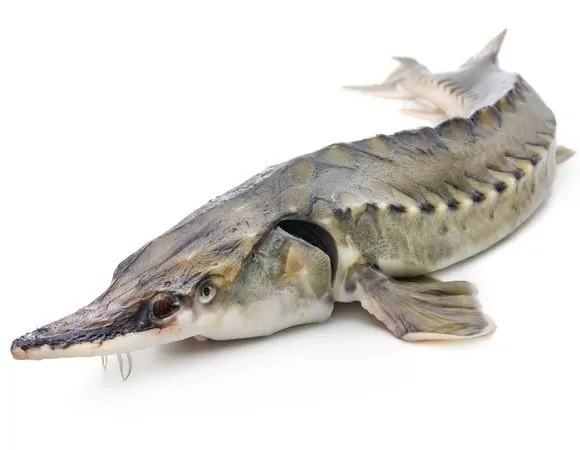
Sturgeon
Most sturgeon inhabit Russian rivers, including Siberia, the Caspian Sea basin and in the east to Lake Baikal. Sturgeon can grow up to 8 meters long and weigh 3.2 tons. Those that are found in fresh water bodies do not reach large sizes. Sturgeon meat and caviar are less valuable than those of other, smaller species. Sturgeon spawns in rivers, remaining there until spring. At this time, the fish significantly gains body weight.
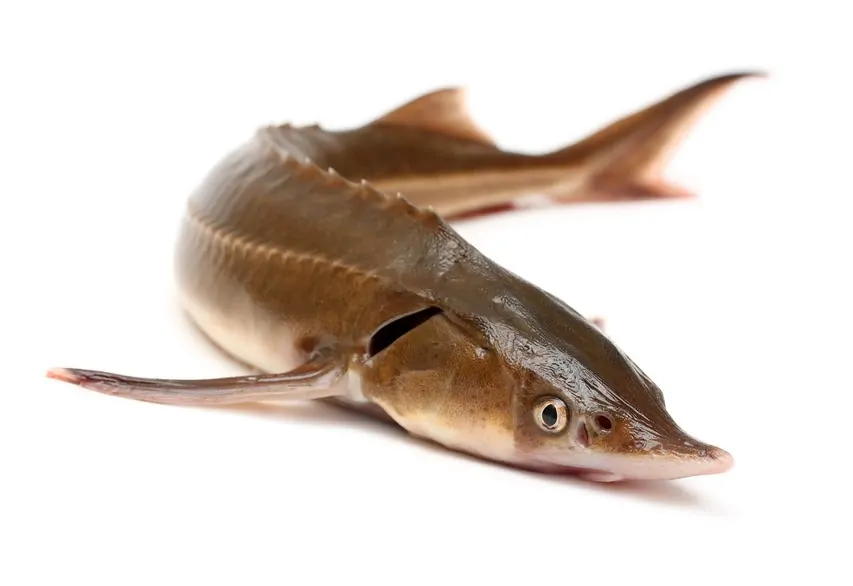
Sterlet
Sterlet is the smallest sturgeon species. Found in the Upper Danube, Ob, Lena, Yenisei, without the need to migrate to the sea. And also in Lakes Ladoga and Onega and others. The fish can reach 15 kg, 1.3 meters long. The lifespan of a sterlet is 30 years. The hybrid of this species with the beluga is called bester. In spring, sterlet spawns in the upper reaches of rivers.

Stellate sturgeon
In addition to the Black, Azov and Caspian seas, sturgeon also lives in the Adriatic and Aegean. She has a long, thin and straight muzzle. It reaches a length of about 2.5 m and weighs up to 80 kg. Stellate sturgeon can live up to 30 years. Its color is dark grayish-green or brown, with a light belly. Stellate sturgeon, like all sturgeons, lies on the bottom during the day and often feeds at night. To spawn, the fish go up the river to shallow water.
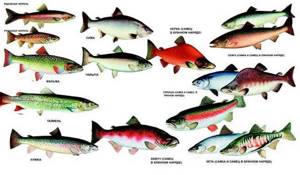
Subfamily whitefish
Included in the order Salmonidae. A group of whitefishes is united by appearance. Includes the genus whitefish, whitefish and valka.
Muksun
Individuals reach a weight of up to 8 kg and a length of up to 70 cm. Muksun lives in Siberian rivers. It has a small head with a high transition into a long body. The color is light gray on the sides with a dark back. The average price is 700 rubles per 1 kg. Fatty meat with a small number of bones is considered a delicacy.

Omul
Freshwater fish, gaining weight up to 3 kg, swimming in the northern waters of the ocean. The photo shows an elongated body with silvery scales. The fins are dark gray. Tail with sharp corners. The average cost for omul is 550 rubles per 1 kg. Protein makes up 80% of the total calorie content of meat and is a quickly digestible product.
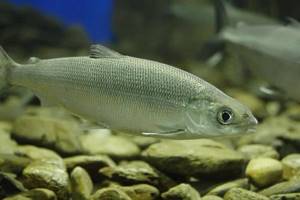
Peled
It grows up to half a meter and weighs up to 5 kg. Peled can be found in rivers and lakes. The body is tall, the caudal fin and the head are covered with black speckles. For the sake of tender meat, rich in phosphorus and vitamin PP, it is bred artificially. Meat costs 160 rubles.
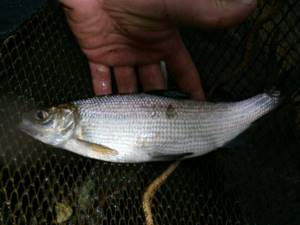
vendace
Fish up to 20 cm long. The body has large scales, the sides are flat. The lower jaw is pushed forward. Lives in lakes. The back is a dull blue color, with silvery scales on the sides. Siberian vendaces are semi-anadromous individuals. The taste is high; 1 kg of fresh frozen fish costs about 300 rubles.
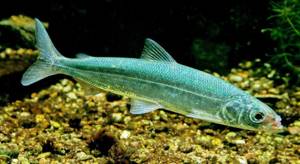
Passable whitefish
Representatives of the group are endangered. All whitefish share common characteristics: protruding lips, smooth head. The meat contains a fat-soluble form of vitamin A. Whitefish fillets contain more fatty acids than any other freshwater fish.
Whitefish is a species of salmon fish. The rounded back and sides are strewn with small spots only in young individuals. Grows up to 40 cm, weighing 300 g. Distributed in Siberian and American rivers.
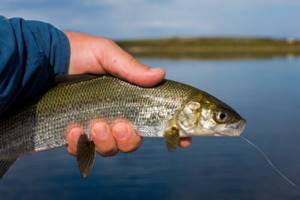
The Ussuri whitefish has a length of up to half a meter and a maximum weight of 2 kg. The tall body is silver in color with a dark gray back and gray transparent fins. After catching, delicacies are prepared. They are purchased for an average of 300 rubles.
Tugun
Freshwater individuals of the whitefish family. Lives in Siberian rivers. Size up to 20 cm in length and weight 100 g. The high nutritional value of the salmon breed and excellent taste affect the tugun fishery. Rare specimens are caught once a year; the price for 1 kg of lightly salted products is more than 2,000 rubles.

Chir
On average, they gain weight up to 4 kg. Large individuals are found weighing up to 16 kg. They live in northern fresh water bodies. They have a small head and a tall body with light scales. They are considered dietary products and contain a lot of protein. The price of chili is at least 500 rubles per 1 kg.
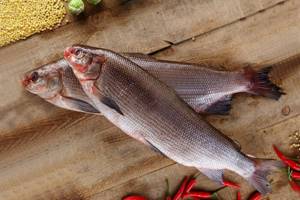
Belorybitsy
Fish of the salmon family with white meat. There are two similar varieties - nelma and white fish. They have a high curve from the head to the back. The lower jaw protrudes forward. Reaches a length of up to 120 cm and weighs up to 14 kg. Silver color, blue back, gray fins. Representatives of the group are second only to noble sturgeon in the ranking of valuable fish. Cost from 1500 rubles per 1 kg.
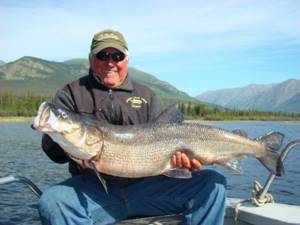
Valki
A species of river salmon. Several species live in a limited range. All valks are a source of valuable meat.
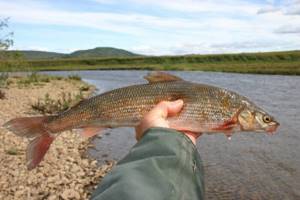
Salmonidae
Salmon are the oldest inhabitants of fresh and salt water bodies in the northern hemisphere, in the Atlantic and Pacific oceans. Russia is famous for its Far Eastern sturgeon, which can also be found in the Baltic Sea.
It is customary to distinguish three subspecies of the salmon family:
- salmon;
- whitefish;
- grayling
The largest of them, ranging from 2-2.5 meters in length and tens of kilograms, are whitefish. Most salmon live 10 years, some can reach 50 years of age. They have distinctive external characteristics: compressed sides with round scales and fins on the middle of the belly. And their skeleton does not have many bones.
The color of salmon caviar is red. This family spawns once, in the place where they were born. And after spawning, as a rule, they die. The body color of salmon changes during this period, as well as under environmental conditions. Salmon feed on the eggs of other fish, insect larvae, mollusks and crustaceans.
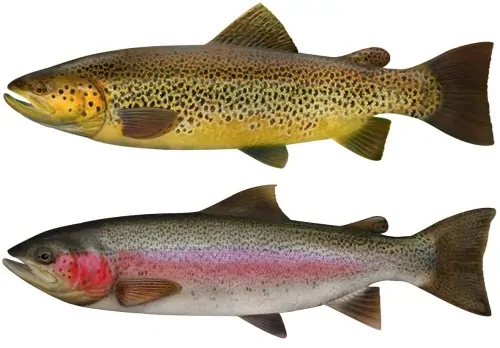
Trout
Trout lives in both freshwater and sea. In Russia, it is found in Lakes Onega and Lake Ladoga, Karelia, and the White Sea and Baltic basins. Sea trout spawn in fresh water from autumn to spring. The bright external color makes the trout recognizable, and due to its numerous dark spots it is nicknamed the “pied fish.” Trout is an oily fish, which is healthier because it contains more fat-based nutrients. It has excellent tasting meat and is often artificially bred.
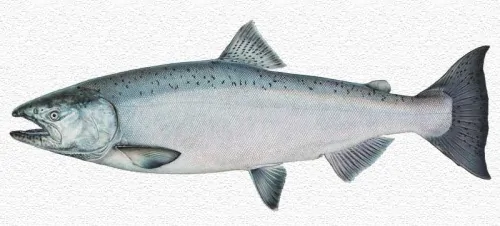
Salmon
Salmon is a favorite fish in Ancient Rus'. You can often hear another name - noble, Atlantic, or lake salmon. Its habitat includes lakes Ladoga and Onega, the White Sea basin. When salmon spawns in rivers, its meat gradually loses its red color, and with it its nutritional value.
The body color of salmon is silver, with dark spots on the upper part. When spawning, reddish spots appear on the body. With a maximum weight of 20 kilograms, salmon can reach 1.5 meters in length. Salmon is a valuable breed in the salmon family due to the rich composition of micro and macroelements in its meat.

Pink salmon
Pink salmon inhabit the waters of the Pacific and Atlantic Oceans. During spawning, pink salmon is found in Siberian rivers and on the North American continent. Its length reaches 70 cm, with a weight of about 3 kilograms. At the age of 2-3 years, pink salmon spawn, usually in early autumn.
The main external differences of the fish: silver body color with small scales, dark spots on the tail and along the upper part of the body. During the spawning period, the fish undergoes external changes: in females, the body color becomes black, and in males, teeth and a hump grow. Pink salmon caviar is quite large in size - about half a centimeter.
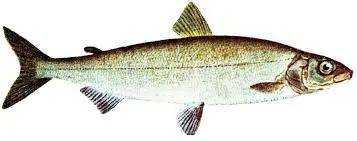
Whitefish
Whitefish is not the most common representative of salmon, inhabiting salt and fresh water bodies. The whitefish's habitat is the northern latitudes of the Pacific Ocean, but the fish spawns in rivers. A whitefish lives on average about 10 years and very rarely its age reaches 20 years, with a body length of about 1.5 meters. The silver-colored whitefish has dark fins. The fish meat is white.
Salmon white or pink
Despite the fact that the color of the meat of these fish is not red, but white or orange, this classification still belongs to the delicacy group. The main factor on which the color of the meat depends is the nutrition of the fish and the place where it was caught. These types of red fish do not accumulate mercury, and also contain many useful polyunsaturated microelements.
Belorybitsa
The large and predatory whitefish lives in the northern regions of the Caspian Sea, from where it goes to the Volga, Terek and Ural. It has two subspecies: whitefish itself and nelma. An individual white fish can have a length of up to 130 cm and a weight of up to 20 kg. The whitefish is white in color, hence its name. Vitamins of group B (especially B12), E, PP predominate in the composition of meat. The calorie content of white fish is 88 Kcal. Of which 17.5 g are proteins, 2 g are fats and almost no carbohydrates. The product most often reaches the shelves in smoked form.

Coho salmon
The habitat of the species is the Pacific Ocean and associated lakes and seas, as well as the waters of Sakhalin, Kamchatka and Magadan. On average, the size of an individual is 60 cm with a weight of up to 4 kg. The species differs from its counterparts in its high taste and increased level of nutrients in its composition. The fish has juicy meat with virtually no bones. Coho salmon has an average calorie content of 171 kcal. Fat content is 7 grams.
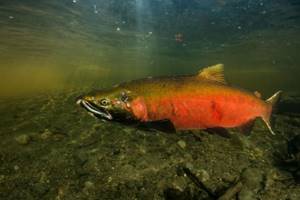
Red salmon
Individuals of sockeye salmon live off the coast of western and eastern Kamchatka, on eastern Sakhalin, as well as in Alaska and the Sea of Okhotsk. Like close relatives, the size of sockeye salmon is within 80 cm in length with a weight of no more than 4.5 kg. The energy value of sockeye salmon is 157 Kcal. Polysaturated elements are 9 g. Thanks to its beneficial vitamin complex, it is considered dietary: it is often included in children’s diets, as well as in the menus of people suffering from high cholesterol.
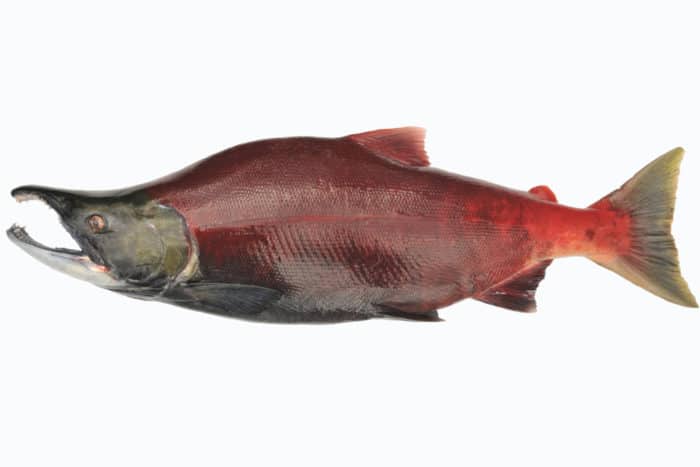
Chinook
The red fish called Chinook salmon is the largest individual in the entire salmon family. The only competitor may be Taimen. However, both breeds are caught before they have time to grow to larger dimensions. In Russia, the fish is found on the northeast coast. Namely, on the territory of the Arctic Ocean, the Barents and Okhotsk Seas, Chukotka and Kamchatka. Typically, individuals are caught from 70 to 100 cm in length with a weight of 6 to 17 kg. Chinook salmon can be distinguished from other salmon species by the spots on the back, tail and fins of the fish. The energy value of Chinook salmon meat is 150 Kcal. Of which 10 grams are fat-containing substances beneficial to the body. Chinook salmon meat and caviar contain a lot of substances beneficial to the human body, such as selenium, tryptophan (a natural antidepressant), iron, magnesium and phosphorus.
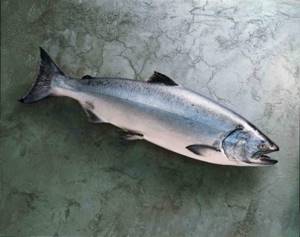
Whitefish
The total number of whitefish varieties exceeds 40 subspecies, which are very difficult to distinguish from each other. Whitefish lives in all rivers and lakes of Europe, America and northern Asia. The main advantage of whitefish is the tenderness and softness of its meat. There are 11 grams of fat per 100 grams of product. Whitefish contains a high concentration of vitamins A and D. Whitefish is not sold fresh or frozen, because its meat quickly spoils. For this reason, freshly caught whitefish should be immediately cooked or smoked.
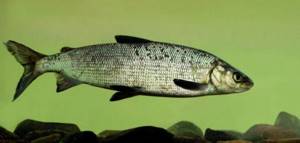
Grayling
This genus of fish includes several subspecies that are found in different areas. The most popular: European, East Siberian, West Siberian, Amur and Kamchatka grayling. A distinctive feature that unites all graylings is the dorsal fin, which resembles a sail. Most often there are individuals weighing 500-800 grams. The calorie content of grayling is 88 kcal. The composition of healthy fish is enriched with protein and healthy fats, of which there are 2 grams in fish.
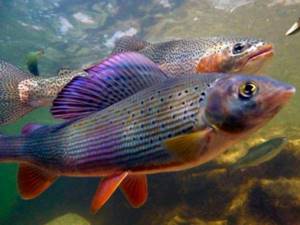
Char
The distribution range of the species is very wide. The favorite habitats of fish are always reservoirs with very cold water. In Russia, char is found in the following places: basins of the Okhotsk, Barents, Kara, seas, Murmansk, Amur, Arkhangelsk regions, Sakhalin, Kola Peninsula, Taimyr, Kamchatka, Kuril Islands, Lake Baikal, Altai, Karelia and Siberia. Externally, loaches are in many ways similar to trout and often grow to 35-50 cm with a weight of 1.3-1.5 kg. The nutritional value of char meat is 135 kcal, of which 6 grams are healthy fats. Char is an affordable red fish, so it is not considered a delicacy. Char, especially the Far Eastern one, tastes like pink salmon. The fish has excellent taste. It is soft and does not fall apart when cooked.

Lenok
Experienced fishermen call this fish freshwater trout. Since the taste of lenka meat is in no way inferior to sea trout. Not everyone is able to get acquainted with the taste of lenok. The red lenok is found in the rivers of Siberia and is not found in reservoirs west of the Urals. In almost all places where lenok can be found, its commercial catch is prohibited. The length of an ordinary individual rarely exceeds 50 cm and weighs no more than 4 kg. The energy value of lenok is 93 kcal, where most of it is proteins - 17 g. and fats – 3 gr.
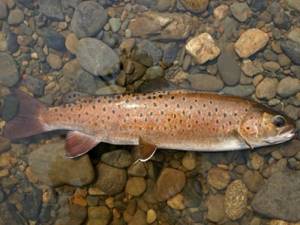
Kunja
This representative of the salmon family is part of the “char” subspecies, which has almost no scales. They catch kunja weighing no more than 2-3 kg. It can be found in the Sea of Okhotsk, Bering and Japan, in the northwest Pacific Ocean, in the Amur River and in the rivers of Kamchatka. The taste of the fish is similar to trout. In fresh meat, you can actually find 70 g of protein, 18 g of fat, of which 9 are Omega-3 acids. Depending on when the fish is caught, the meat is a certain color. If you catch it in the spring, it will be white, and if you catch it in the fall, it will have a pink tint.
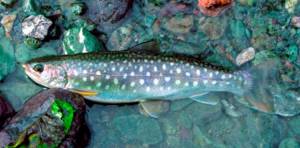
Taimen
The subspecies of large salmon fish taimen is widespread. It is found in large rivers and lakes of Siberia and the Far East, also in Altai and northern Kazakhstan. The taimen predator reaches more than 1.5 meters in length and 60 kg in weight.
The calorie content of the product is 88 kcal. Taimen is a seafood of medium fat content. Fish contains 2 grams of fat. It has very delicate pink flesh with intermuscular layers. The fish is less tender in consistency than salmon, however, this difference does not spoil the taste, which is valued by chefs. The high price of taimen is due to its rarity, strict fishing quotas and the difficulty of delivering fresh product.
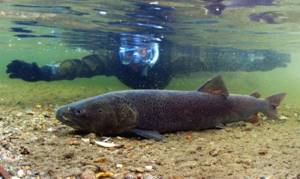
Composition and benefits of red fish
The health benefits of red fish are very great. It is rich in proteins - building materials for cells and tissues. Its difference from other types of fish is in the diverse composition of nutrients, vitamins and minerals.
The main components of red fish:
- fats and fatty acids: omega-3;
- micro and macroelements: potassium, calcium, magnesium, sodium, phosphorus, selenium, iron, iodine, fluorine, etc.;
- amino acids: arginine, valine, leucine, tryptophan, etc.;
- B vitamins: thiamine, riboflavin;
- vitamins: C, E, PP, A, D.
Omega-3 normalizes cholesterol, strengthens blood vessels, which affects excellent brain activity. Omega-3 improves memory, so it is especially recommended to add fish to the diet of children and schoolchildren. Increases performance. Reduces the chances of developing cancer and hypertension. Extractive substances will help improve the digestion process. Methionine protects the liver from toxins and prevents diabetes. Iodine is important for the prevention and control of thyroid diseases.
Vitamin D improves immunity and strengthens the nervous system. It will also help cope with insomnia, helping to normalize healthy sleep. Strengthens bones, which is also important for the prevention of rickets. Thanks to vitamin D, calcium becomes easily absorbed, which is also important for osteoporosis, a disease that affects women during menopause. Folic acid is important in the prevention of anemia and also has a beneficial effect on the skin. Active fats will help you always stay “in shape”, without a hint of extra pounds. Vitamins B, A, E, D contribute to strong immunity.
It has been proven that regular consumption of red fish:
- improves metabolism and blood circulation in the body;
- normalizes the functioning of the liver, gastrointestinal tract, and cardiovascular system;
- strengthens arteries;
- restores the nervous system;
- helps prevent thrombophlebitis;
- slows down the aging process;
- helps cope with depression and stress;
- reduces the risk of age-related macular degeneration, leading to vision loss and atherosclerosis;
- relieves shortness of breath and anemia;
- increases cell regeneration;
- reduces the appearance of inflammatory processes;
- improves the condition of skin, nails, hair, teeth;
- strengthens bones.
By regularly eating red fish, you can replenish the supply of missing substances in the body and maintain them, which means you can always be healthy, beautiful and cheerful.
Harm and contraindications
Do not forget that, like many other food products, salmon and sturgeon have their own list limiting their consumption.
Contraindications for use include:
- seafood allergy;
- pregnancy and lactation;
- stomach ulcer.
An excess of foods containing red fish in the diet can lead to swelling.
The quality, and therefore the usefulness, directly depends on the habitat of the fish, its nutrition and age. So, if the fish was caught in polluted waters, then it will certainly contain salts of heavy metals, even radioactive ones, causing irreparable damage to health. It should be remembered that the older the fish, the more it has absorbed from the environment. You should also be wary of low-quality artificially bred fish, when unscrupulous producers use antibiotics, hormones and other chemicals that can be harmful to health when growing it.
This does not apply to fish from the Akulovka farm. Our trout and whitefish are raised on high-quality natural feed that meets all standards. Regular tests and analyses, as well as certificates, confirm the high quality of shark fish. Reviews from our grateful customers are also an indicator of a healthy and fresh product. Nutritionists and Akulovka call for regular consumption of red fish, since this product is low-calorie and high-protein, and its significant benefits are important for everyone.
Red fish is a beautiful fish
This is exactly what our ancestors believed, because red has been associated with beauty since ancient times: the maiden is red, the corner in the house is red, the sun is red. Red fish from the salmon or sturgeon family is a storehouse of protein, vitamin D, omega-3, calcium, iodine and other essential substances for excellent health and longevity.
But at the same time, you should be careful when choosing and purchasing this product, and also if you are allergic to seafood. Not only beautiful, but also natural, and therefore full of all useful vitamins, the fish can be ordered right now in the Akulovka online store with delivery to your door in St. Petersburg and Moscow. To enjoy its excellent soft and delicious meat right now, for the benefit of your health and general well-being!
Characteristics of the salmon family
The salmon family consists of individuals that have a long body covered with scales. Their head is bare and there are no mustaches. The main distinguishing feature of these fish is the presence of an adipose fin, which has no stripes. There is also a fin on the back. The eyes have light eyelids.
There are several species of salmon, but they all have one distinctive feature: they can change their appearance. It depends on the habitat and life expectancy. salmon fish are highly susceptible to change ; they receive some kind of nuptial attire. Their color changes from gray to mottled, with areas of dark, scarlet or bright crimson. The skin becomes tougher due to the fact that scales grow into it. The jaws become crooked and teeth grow. A hump appears on the back.
